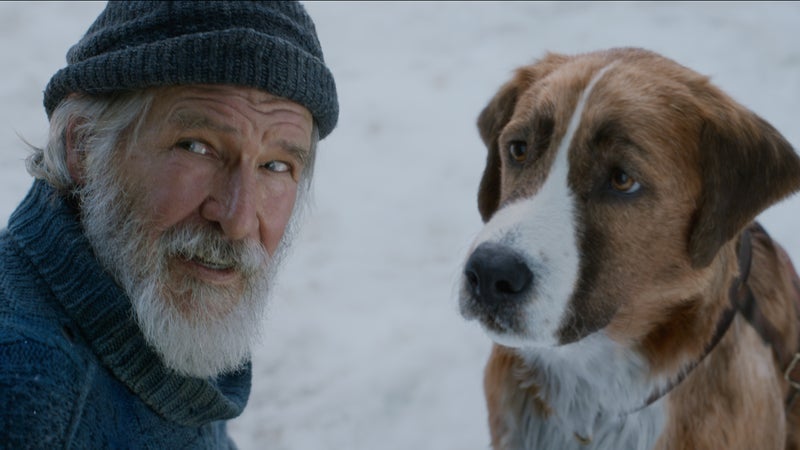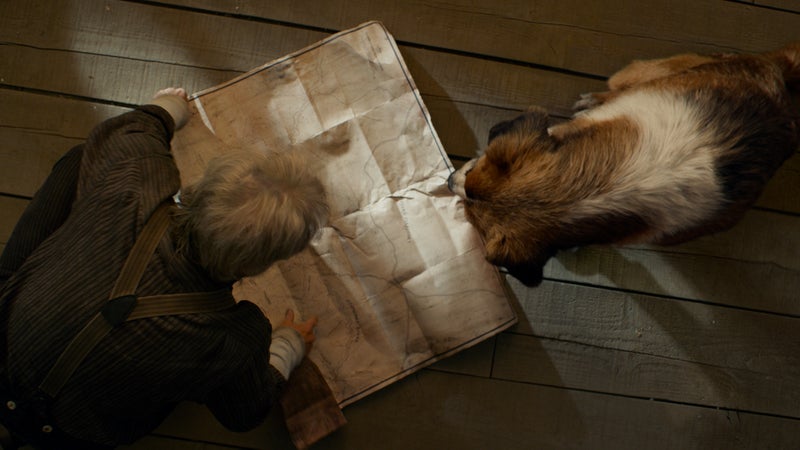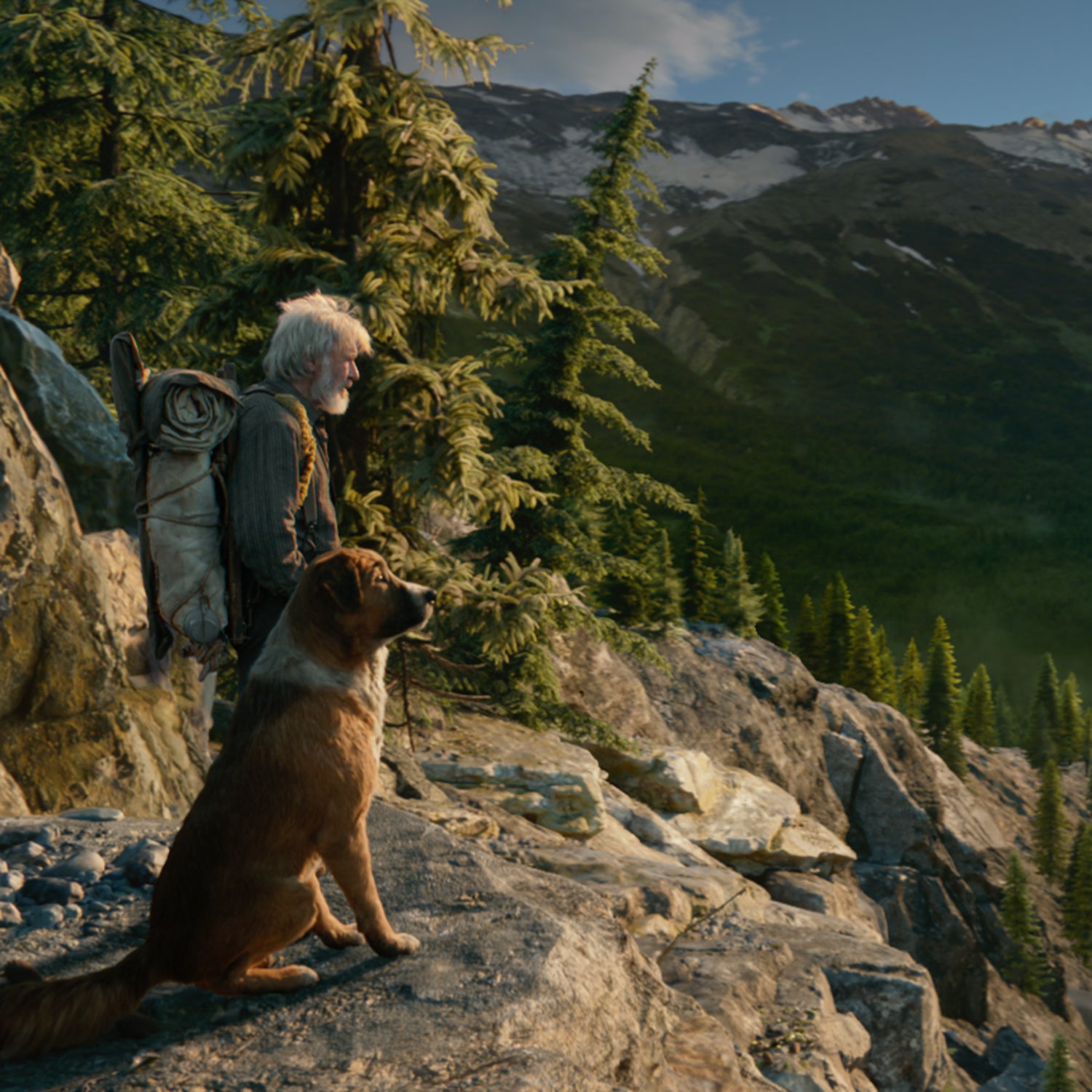With climate and ecological catastrophe at the forefront of conversations about the outdoors these days, it would have been easy to╠řremake Jack LondonÔÇÖs 1903 classic novel╠ř╠řin a way that rallied viewers to engage with the natural world.╠řLike Buck, the storyÔÇÖs canine protagonist, who eventually abandons human society to join the wolves of the forest, todayÔÇÖs audiences might benefit from connecting with the natural surroundings weÔÇÖve╠řlong╠řtaken for granted.
However, the╠ř, which hit╠řtheaters February 21, remains polite and politically agnostic╠řwhile subtly glorifying wild places and adventure. Audiences are taken on a virtual Disneyland ride through the YukonÔÇÖs gold rush,╠řstarring a computer-generated and easy-to-love version of Buck, a╠řSaint╠řBernardÔÇôScotch collie mix,╠řand live-action human heroes led by Harrison Ford.╠řThe plot will be familiar to most older audiences: Buck begins the story as the domesticated pet of Judge Miller (Bradley Whitford)╠řbut is kidnapped from his home in California and shipped to a boomtown in northwest Canada, where heÔÇÖs sold to mushers and soon learns to thrive on the frontier as a member of a mail-running dogsled team. Later╠řthe team is sold to the movieÔÇÖs villain, an inexperienced, mean, and cartoonishly dressed╠řprospector (Dan Stevens). But Buck is soon saved by John Thorton,╠řplayed by╠řFord╠řwith gruffness and a grandfatherly sympathy. Given more freedom than ever, Buck is drawn to the forest, where he meets a pack of wolves. He travels back and forth between Thorton and the forest╠řand eventually joins the pack permanently, embracing his wild ancestral birthright.╠ř
But while 20th Century Fox (now owned by Disney)╠řhas made a childrenÔÇÖs╠řversion of The╠řCall of the Wild designed for╠řwide appeal,╠řFord has no reservations about advocacy. During a recent╠řpress interview╠řin Los Angeles, I asked Ford what he would say to any fans that didnÔÇÖt believe in climate change.╠ř
ÔÇťGet out of my house,ÔÇŁ Ford replied, without hesitation.

That response wonÔÇÖt surprise anyone familiar with FordÔÇÖs years of unapologetic environmental activism. A former Boy Scout and current╠řresident of Jackson Hole, Wyoming, Ford was once ╠řfrom Indonesia during a documentary shoot╠řas he aggressively questioned the countryÔÇÖs forestry minister about illegal logging in one of the countryÔÇÖs national parks. Now 77 years old, Ford says he was drawn to The╠řCall of the Wild╠řas an opportunity to make a family film.╠ř
Fans of the book may be divided about this unabashedly╠řtame remake, but the film succeeds╠řby doubling╠řdown on two things╠řoutdoorspeople will appreciate: dogs and adventure. There were no real canines used on set,╠řand BuckÔÇÖs movements are a little too perfectly expressive to be confused with a real animalÔÇöbut the CGI captures all the reasons we love gregarious, mischievous pets like Buck, and rooting for a protagonist without any lines isnÔÇÖt╠řdifficult.╠ř
Those of a certain age in the audience will be treated to a reminder of the exasperated Ford that they loved in Indiana Jones╠řand Star Wars: ÔÇťSon of aÔÇŽ,ÔÇŁ Ford mutters╠řcharacteristically╠řat one point╠řas he walks outside and slams╠řa door behind him, newly resolved to rescue Buck. (Of course, this being Disney, the noise from the slamming door cuts off FordÔÇÖs line before any expletives are heard.)

As an adaptation, the movie freely discards some of the grittier and darker parts of the book (LondonÔÇÖs version╠řincludes far more graphic violence).╠řItÔÇÖs not a perfect representation of dogsledding, the gold rush, or the Yukon either. It was also filmed outside Los Angeles and heavily augmented with CGI, and itÔÇÖs kind of depressingly impressive to realize that a film about the role of nature in our lives chose to have its depictions of natural scenery magnificently rendered by computers. What the movie gets right is the╠řsense of belonging that one experiencesÔÇöwhether one is human or a dogÔÇöwhen communing with the natural world.
ItÔÇÖs a feeling Ford knows well: he and his family just spent 12╠řdays rafting on the Colorado River, which he described as transcendental. ÔÇťEach day it is just you, geology, sky, and the power of nature,ÔÇŁ he said. He spoke slowly and seriously, taking time to find the right words. ÔÇťThe beauty of interrelationships, the biodiversity, all of this spectacular complication thatÔÇÖs part of nature, thatÔÇÖs life,ÔÇŁ he continued. ÔÇťThatÔÇÖs as elemental as it gets.ÔÇŁ╠ř
Humans have often attempted to express the elation, contentment, or sense of pure rightness that comes from spending time in the wild. Attempts to capture those feelings╠řin popular stories can often be sappy or insufficient compared to actual╠řexperience, and╠řDisneyÔÇÖs new adaptation, bursting with cheesy moments and CGI-altered reality, is no exception. But at the end of the day, whatÔÇÖs╠řthe harm of an utterly tame, family-friendly flick that glorifies an animated approximation of the wild? With any╠řluck,╠řitÔÇÖll inspire some of the children watching to go outside.╠ř


